What Is B2B Ecommerce Marketing?
B2B ecommerce marketing refers to a set of practices and strategies to help B2B ecommerce businesses increase their sales.
Business-to-business (B2B) is a term that applies to companies that sell goods and services to other businesses. While some companies are exclusively B2B, others (like Amazon) can be both B2C and B2B.
Ecommerce allows B2B companies to make sales over the internet in addition to other channels.
To be successful in B2B ecommerce, companies apply B2B ecommerce marketing strategies. They help raise brand awareness and attract buyers in the digital channel.
Traditionally, B2B companies relied on in-person sales.
Sales representatives used to reach out to leads, schedule meetings, and try to convince them to buy their product or service.
But in the new millennium—and especially since the COVID-19 pandemic—the rise of B2C ecommerce has also rubbed off on B2B.
Today, 65% of B2B companies support ecommerce. And the average B2B business makes over 18% of its revenue from this channel.
What’s more, B2B buyers are increasingly using ecommerce. Which turned it into the most effective B2B sales channel.
As a result, B2B companies are setting aside more of their budget to grow their business via ecommerce marketing.
8 B2B Ecommerce Marketing Strategies
The following B2B ecommerce marketing strategies will help you reach new customers and expand your brand’s presence.
1. Search Engine Optimization (SEO)
SEO for B2B ecommerce means:
- Optimizing your website to rank for relevant keywords
- Monitoring and fixing any technical issues on your website
- Building backlinks to your website
Among many other moving parts.
SEO is one of the most important channels for every B2B ecommerce business.
When your website ranks highly for keywords your buyers are searching for, it will improve brand awareness. And, eventually, increase sales.
For example, if you’re a company that sells labels to clothing manufacturers, you would want to rank for the “clothing labels” keyword.
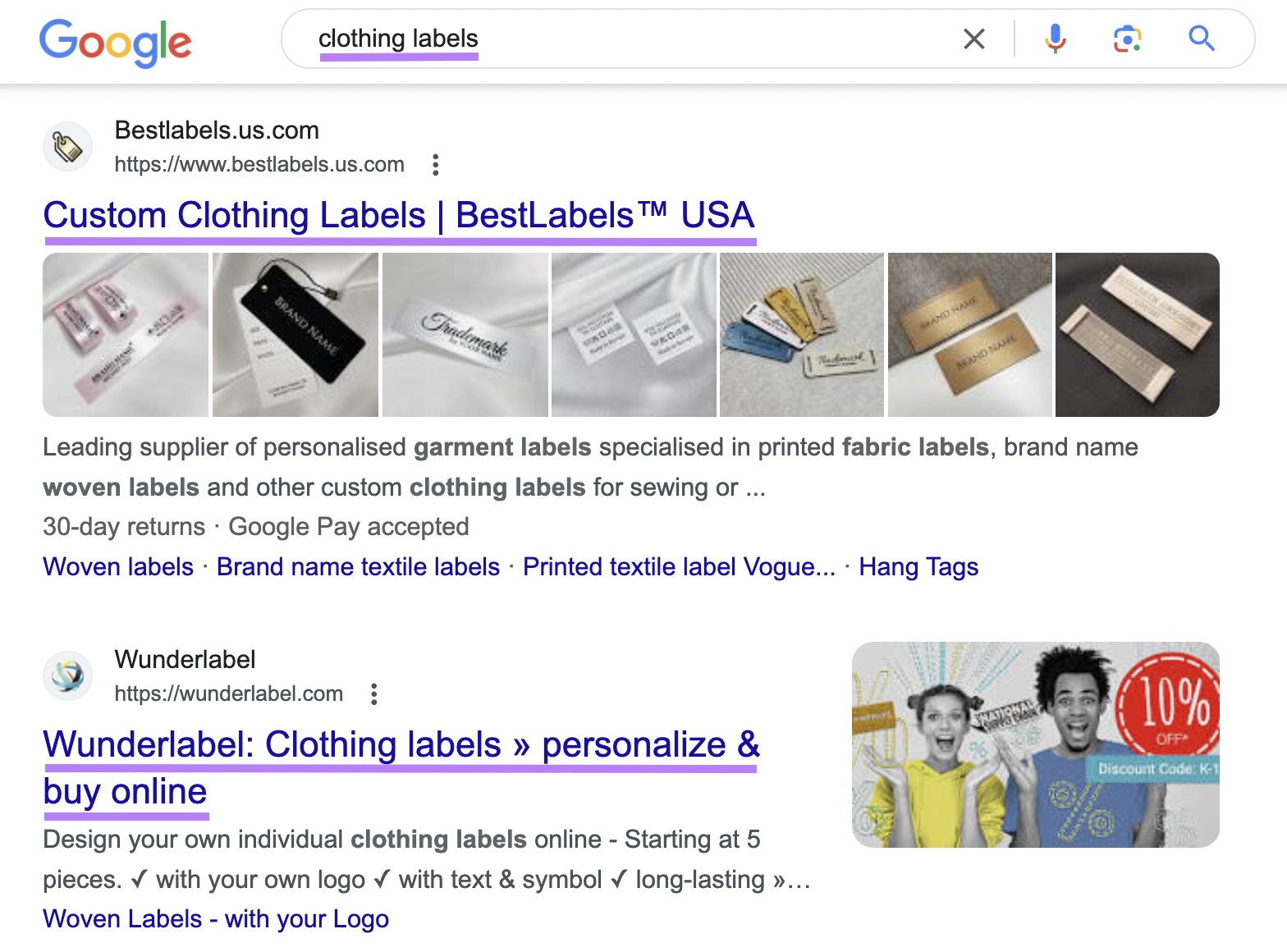
An easy way of finding out your most important keywords is to research your top competitors. You can do this with Semrush’s Organic Research.
The first step is to paste your competitor’s homepage URL into the search bar and click “Search.”
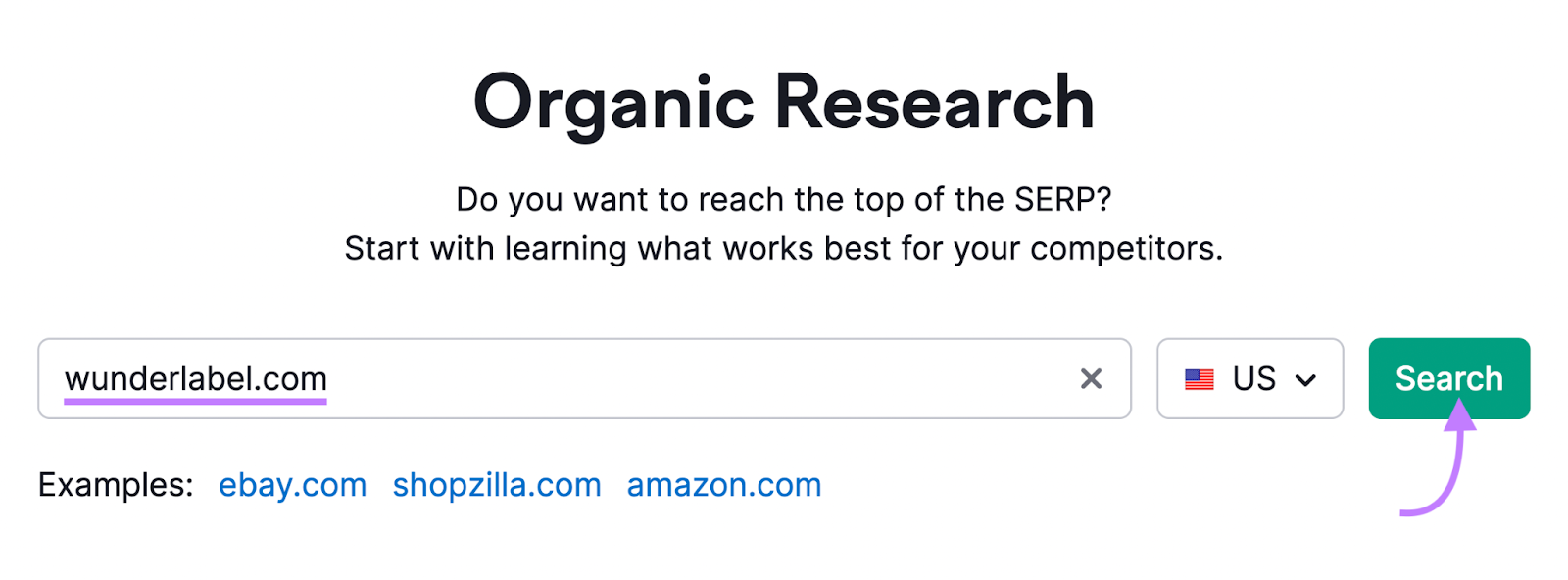
You will be taken to a dashboard that includes data on the website’s keyword rankings, traffic, competitors, and other SEO insights.
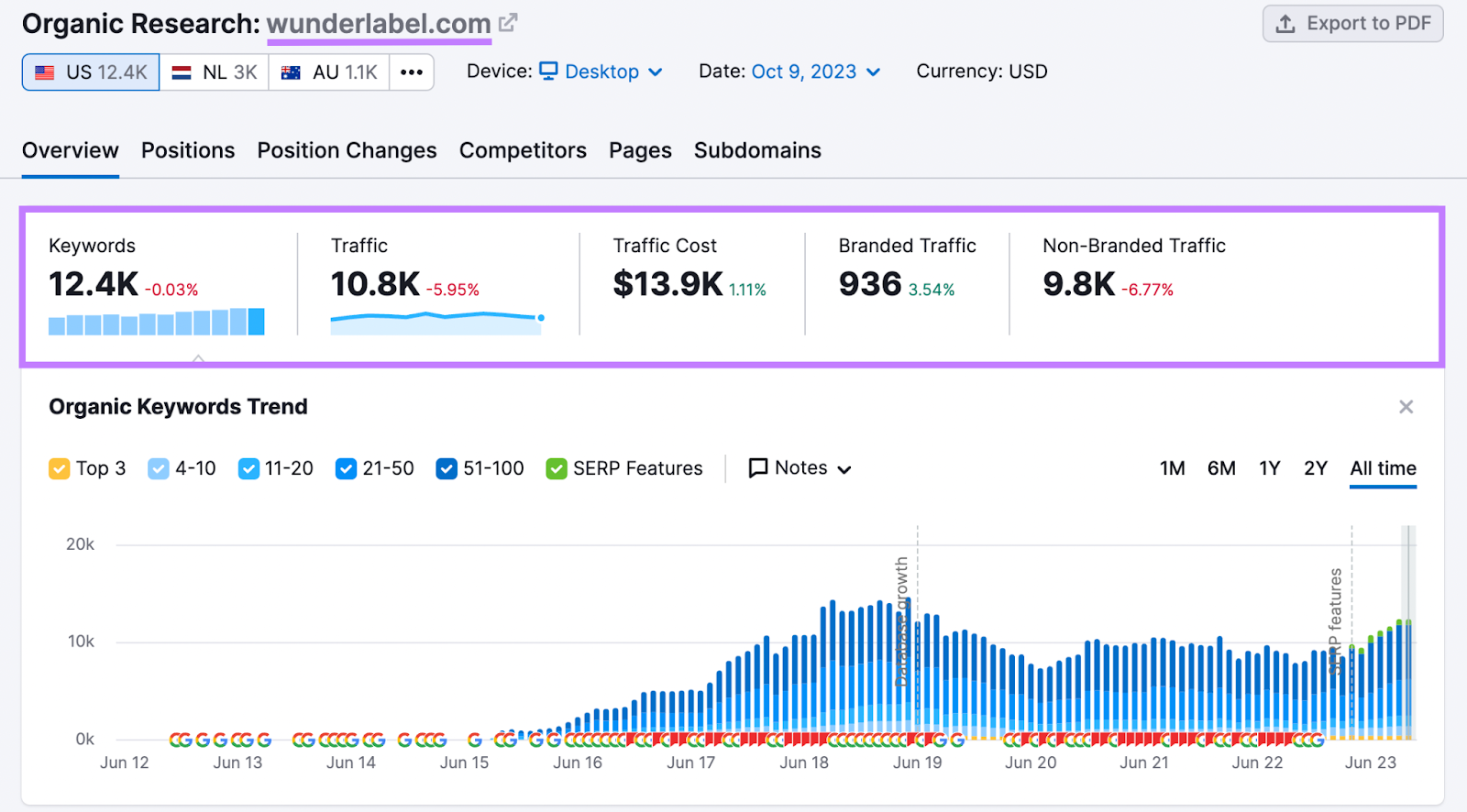
Click on “Positions” in the top bar to find all the keywords the website ranks for.
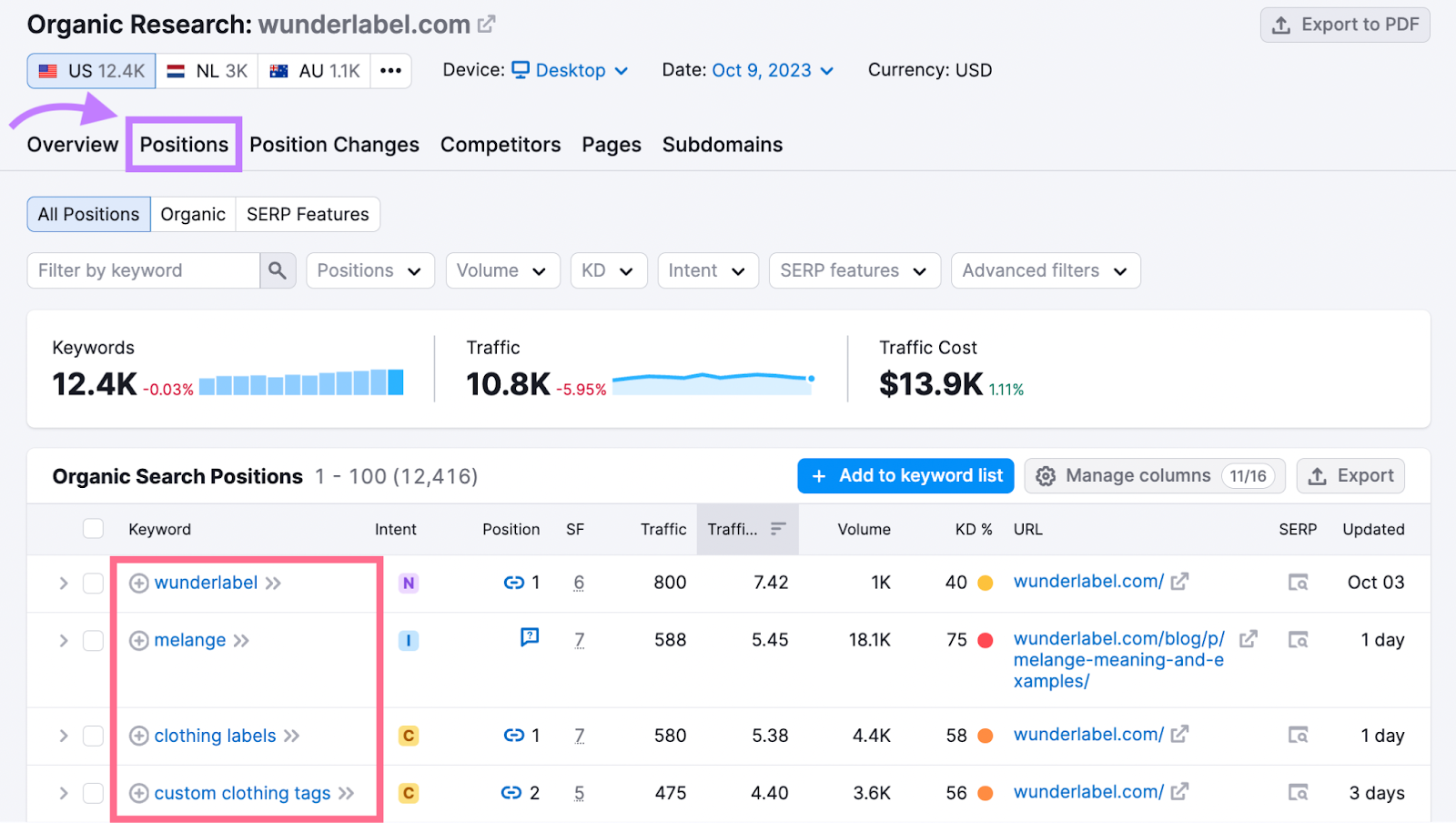
From here, you can apply filters to refine the keyword list. For example, under “Advanced filters,” you can exclude any branded keywords.
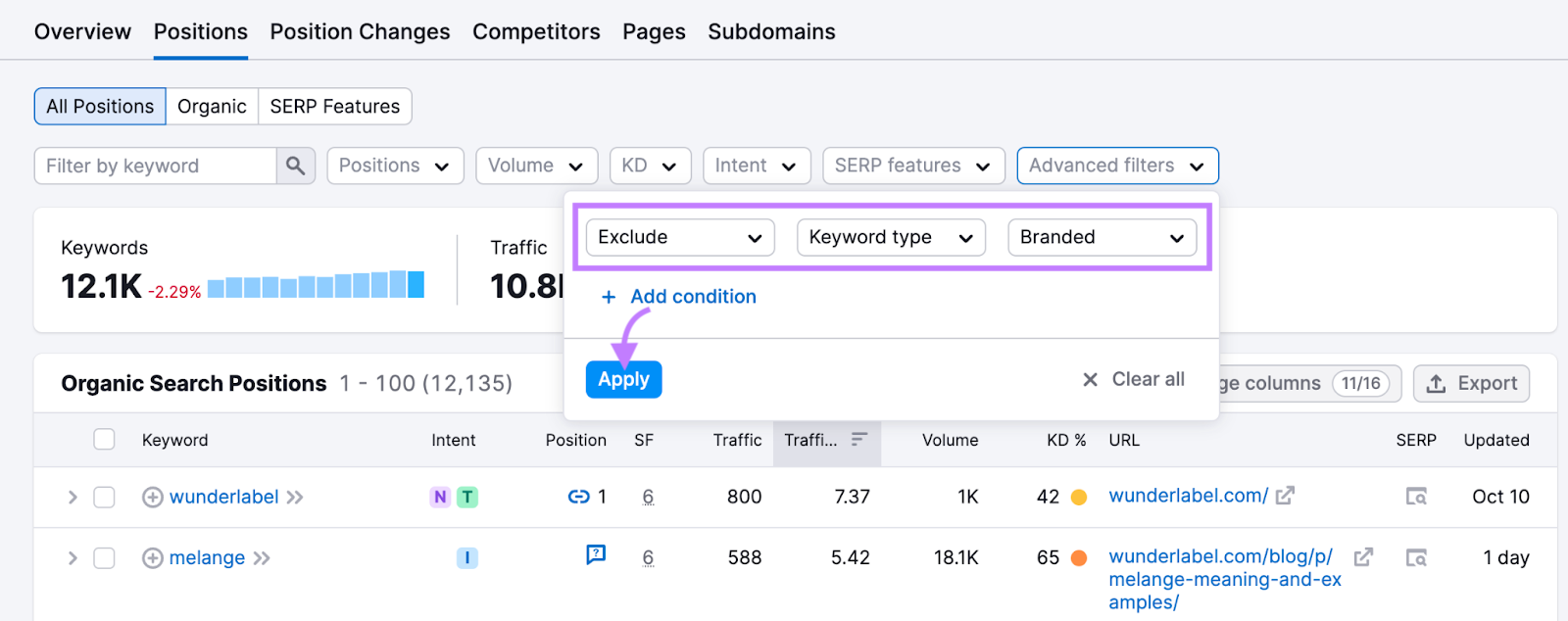
Select your top keywords and add them to a list by clicking “+ Add to keyword list”.
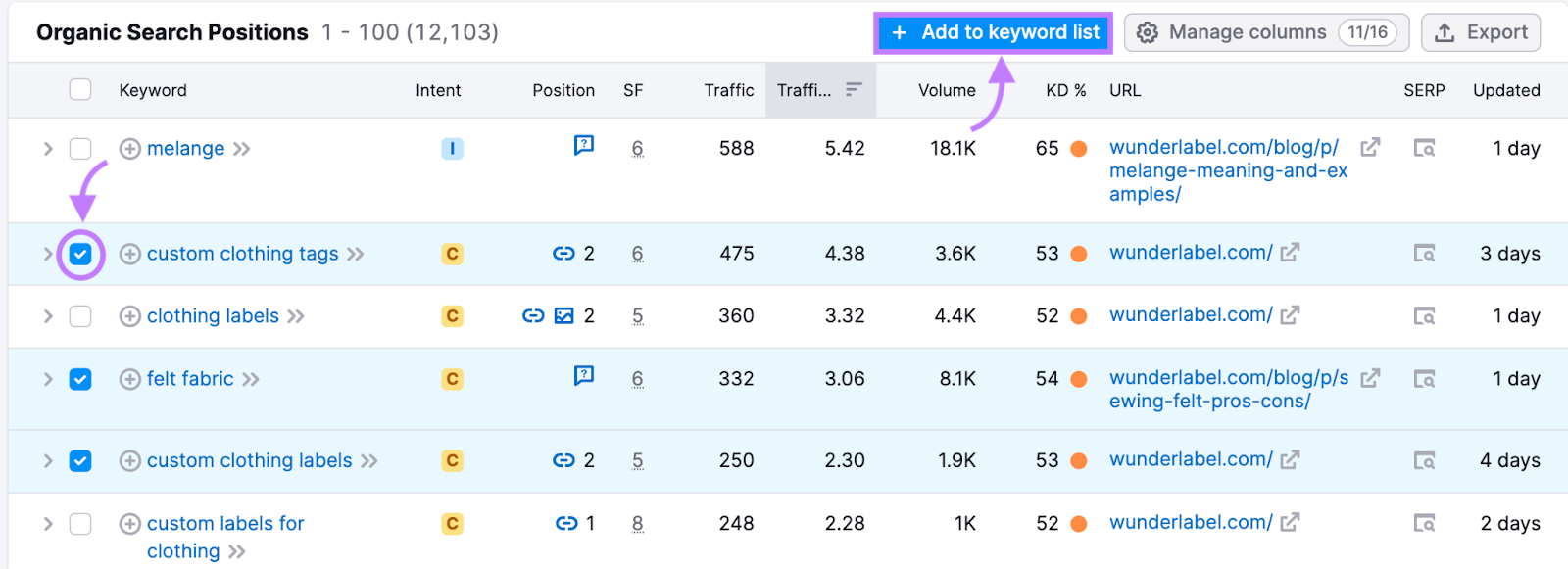
Fixing any technical issues on your website is also important for SEO. If your website is slow, for example, that can harm your rankings and the user experience..
Using Site Audit, you can analyze your website for technical issues and get tips to improve them.
Paste your website’s URL in the search bar and click “Start Audit.”
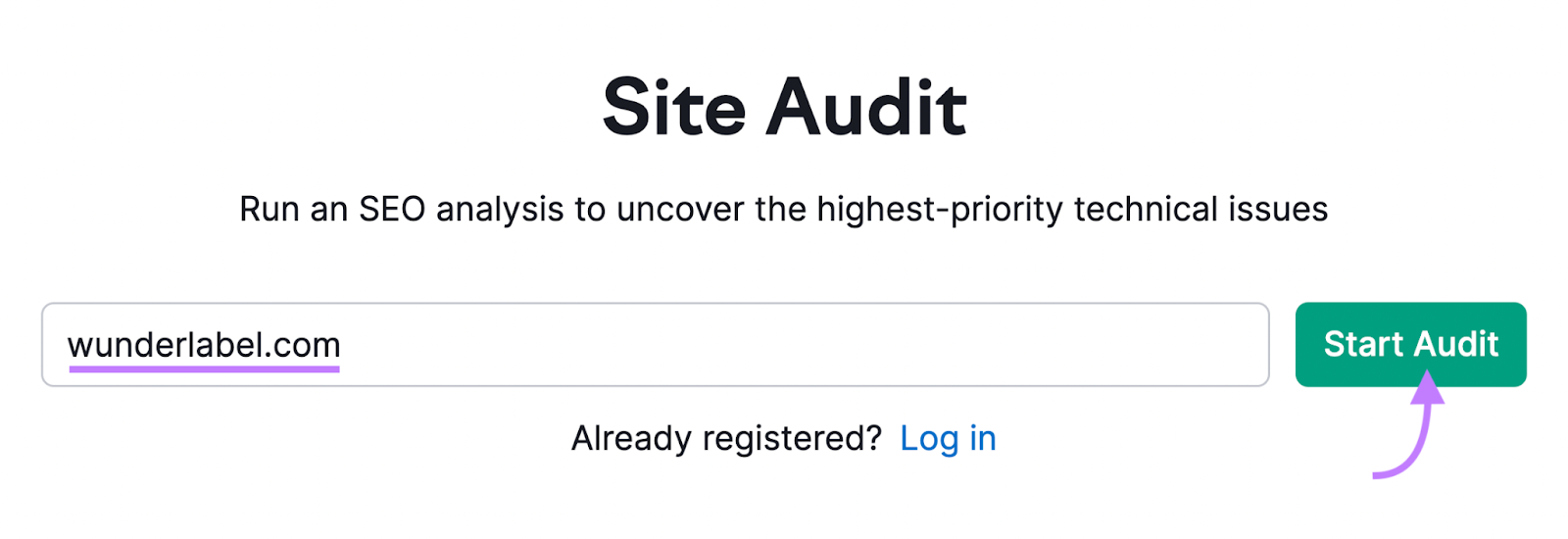
The tool will generate a dashboard with insights into your Core Web Vitals, site performance, crawlability, and other SEO factors.
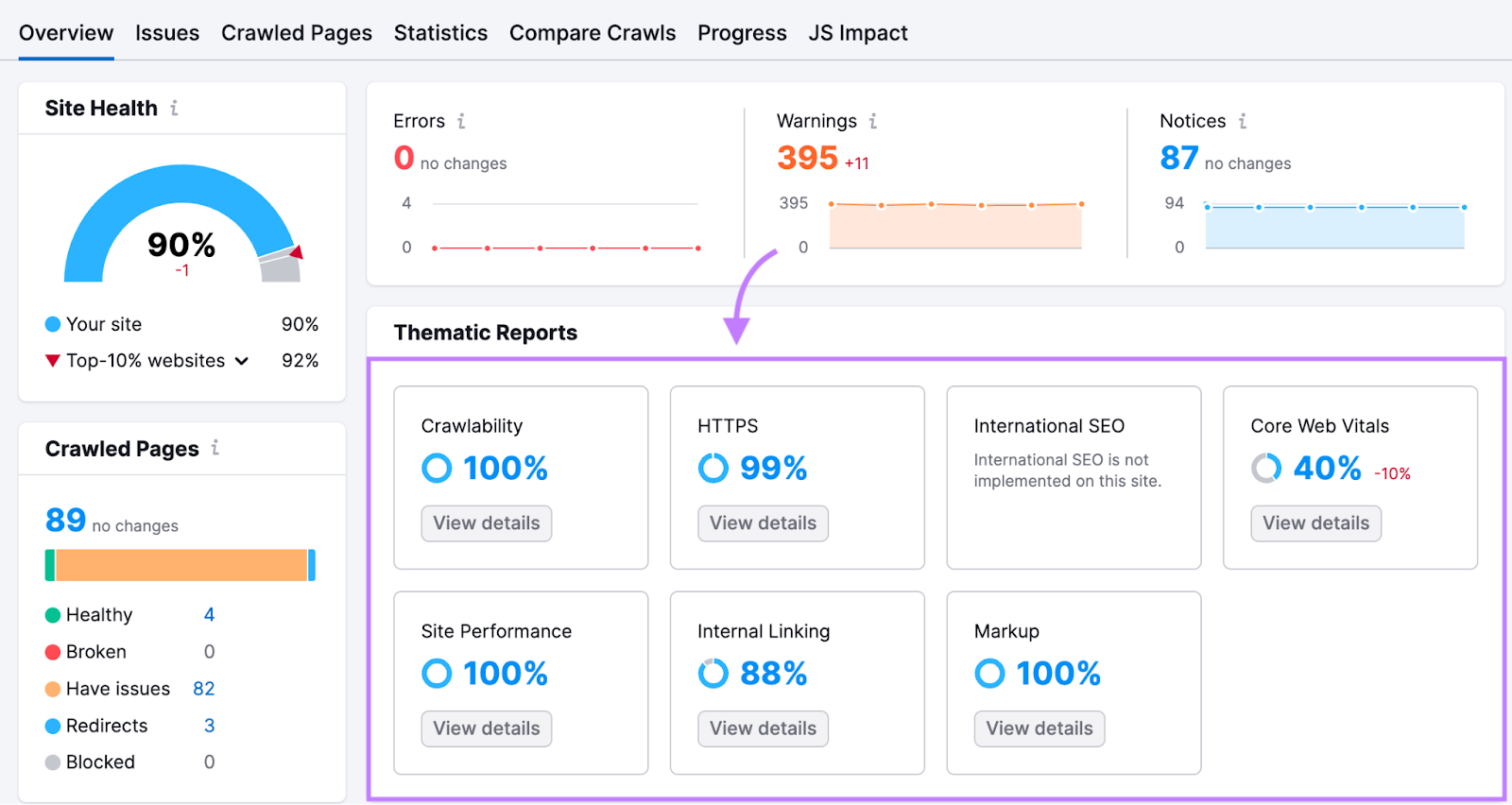
From there, you can explore different reports by clicking on “View details.”
In the Core Web Vitals report, for instance, you will find tips to improve your website’s user experience.
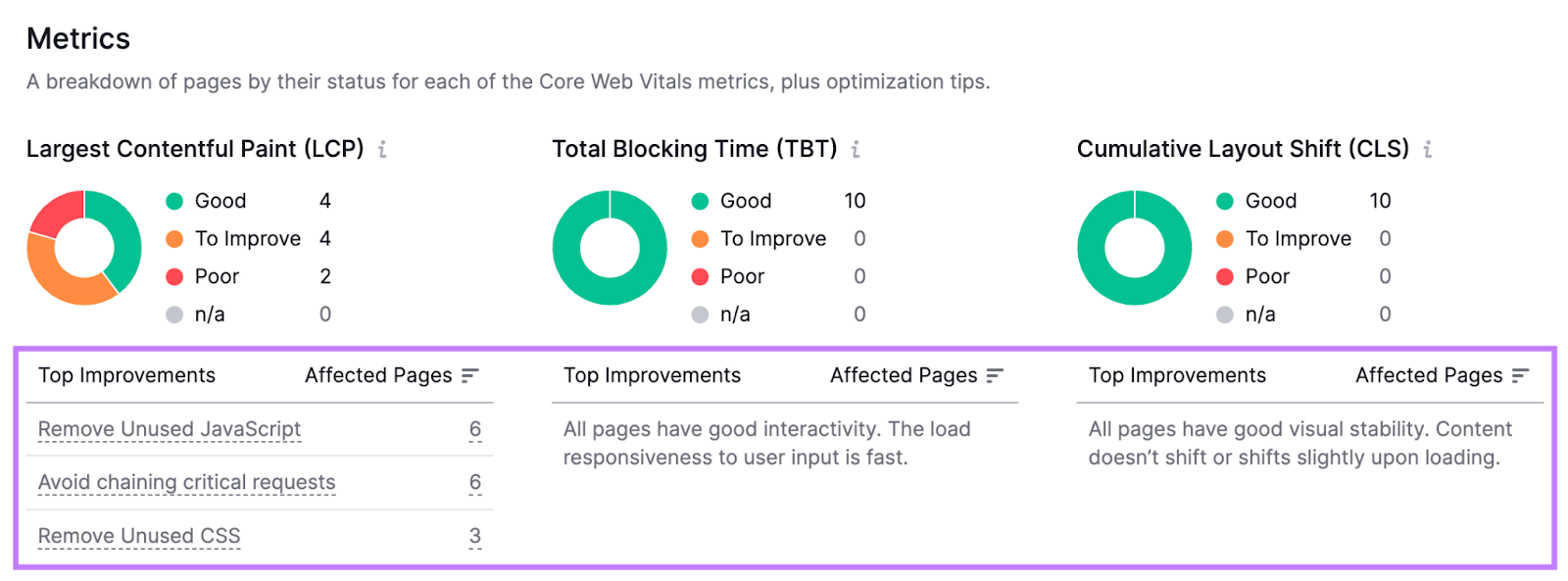
Finally, building backlinks from authoritative websites will help search engines see your website as a credible source.
You can get backlinks in various ways. For example, by publishing original content other websites will want to link to. Like an industry report.
2. Content Marketing
Content marketing means using content (blog posts, videos, podcasts, case studies, etc.) to promote your brand.
As a B2B ecommerce business, content marketing is a key ****** in your arsenal.
Why?
Because it helps you build trust and relationships with your audience. It allows you to become a credible voice in your industry.
Here are a few steps to get started with B2B content marketing:
- Research your audience. You need to understand their interests and problems so you can create content that appeals to them
- Audit the existing content on your website. This will help you understand if there is any outdated content you should update or remove
- Create content for different stages of the funnel (top, middle, and bottom of the funnel). You want to engage customers whether they’re just beginning their research or ready to buy
- Distribute your content. Consider organic search, email, social media, and content syndication as potential options
Additionally, you need high-quality content for your strategy to succeed.
Quality content is original, authoritative, and helpful. Whether you’re writing blogs or recording podcasts, try to feature industry experts or provide your own informed insights and opinions.
Need help creating great content? Try the SEO Content Template.
3. Social Media
Social media is another important channel for your marketing strategy. Because 40% of B2B buyers use it to guide purchasing decisions.
But how do you decide which platform to focus on?
The key is to research your audience and find out which platforms they’re using the most. For example, if you’re targeting the C-suite, then LinkedIn is an excellent choice.
Dan Martell, the founder of the SaaS Academy, also suggests the following:
If you’re starting off, I always recommend people go with the social media platform that they can actually commit to being consistent to. That’s more important than being on all of them. But if you want to optimize your time and energy, repurpose content across all social platforms. The copy might change if it’s on a Medium post or a LinkedIn post, but at the core of it, it’s the same content.
One of the ways that Stripe, a financial technology company in the B2B space, uses social media is to repurpose customer stories.
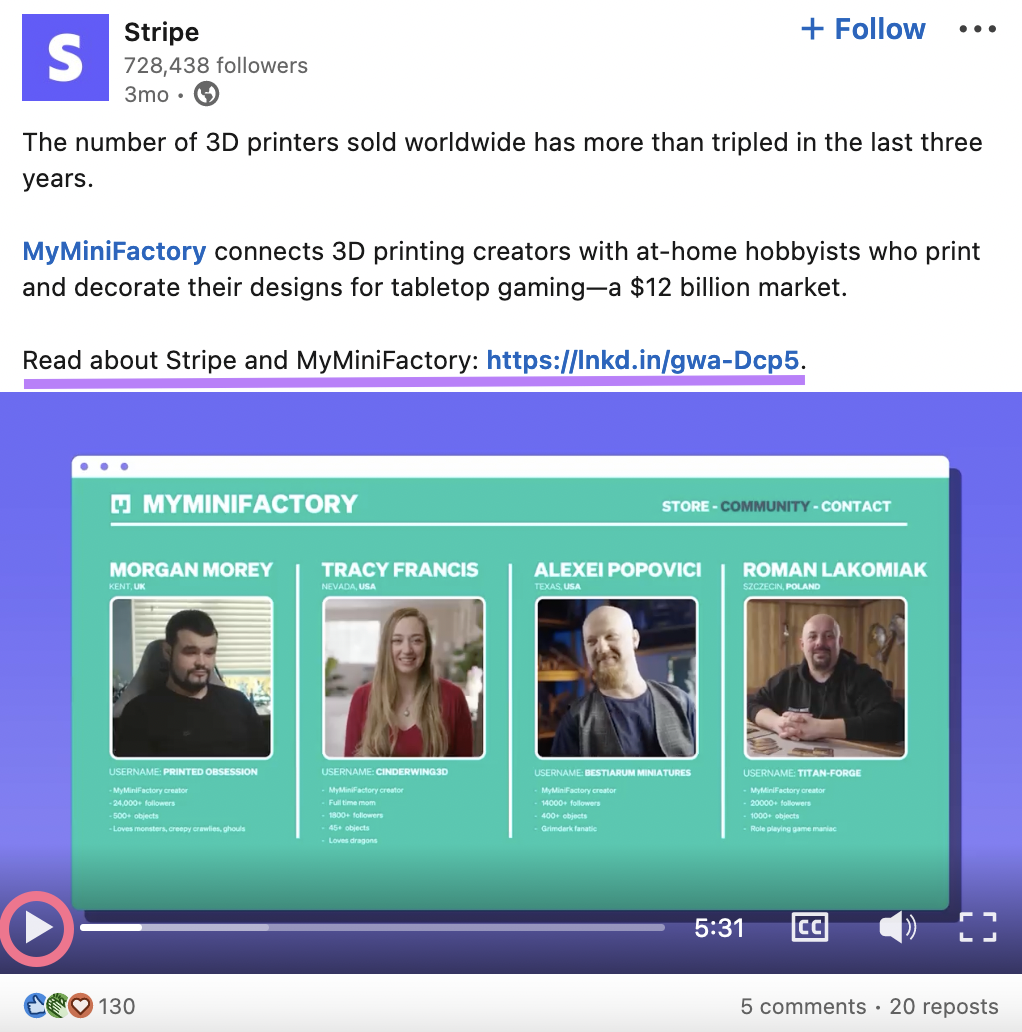
The LinkedIn post is short and concise to capture the audience’s attention. If they’re interested in learning more, they have two options: watch the video or read the case study. (The same video is also available on Stripe’s YouTube account.)
Once you decide which platforms you’ll use, set goals for what you aim to achieve. Are you aiming for improved brand awareness? More leads? These goals will be your north star as you create content for each platform.
Posting consistently is also important. As well as tracking performance to understand what’s working.
And if your posts aren’t getting engagement, look to brands in your industry that are successful on social media to see what they’re doing right.
4. Email Marketing
As part of your B2B ecommerce strategy, email marketing helps you drive sales and nurture existing customers.
Effective B2B email content develops a customer’s trust in your product or service. It also generates interest to support product launches or sales.
One way of building your email list is by publishing gated content. In the example below, the company Plaid asks visitors to fill out a short form to get a free download of their latest report.
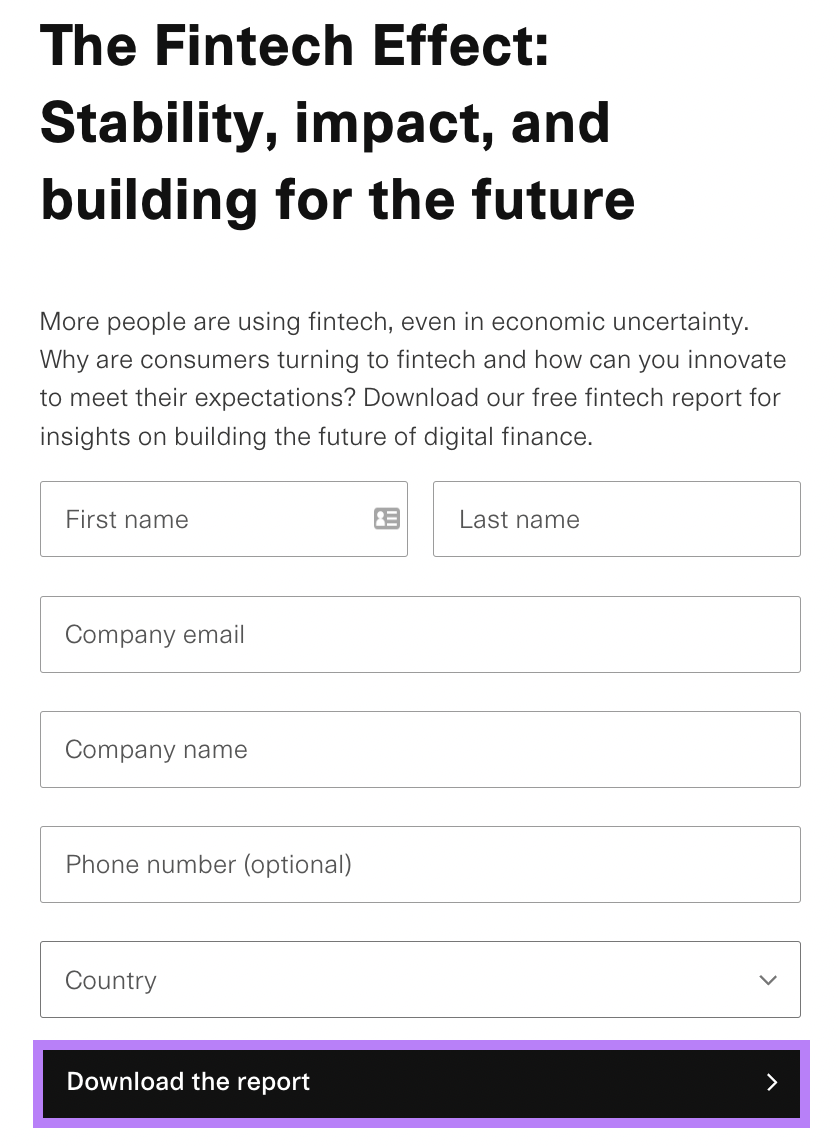
You can segment your email list based on customer profiles, location, and other characteristics. This will enable you to send them personalized emails they are more likely to read and engage with.
New subscribers, for example, can receive a welcome email campaign. Privy sends all new subscribers a simple but punchy email that:
- Reiterates the company’s mission and how it relates to the customer
- Provides value with helpful reading suggestions
- Encourages the subscriber to sign up for a free account
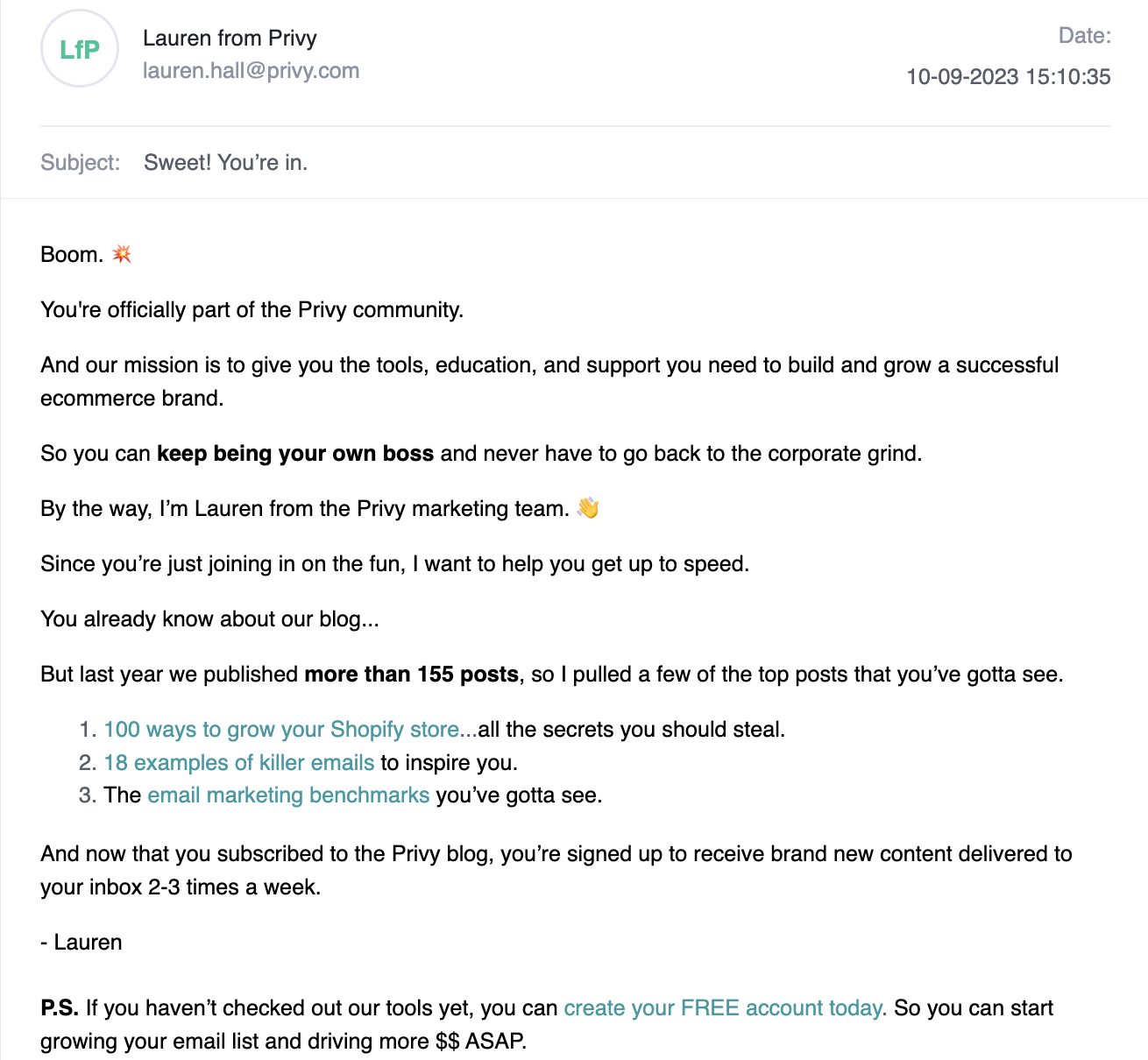
Email automation tools (like Mailchimp, Sendgrid, and ConvertKit) help you save time on creating and managing email campaigns.
5. Account-Based Marketing (ABM)
Account-based marketing (ABM) is a B2B strategy that targets potential customers with personalized marketing campaigns. During this process, sales and marketing teams work closely to identify ideal accounts and provide them with high-touch service.
ABM tends to focus on high-value accounts.
For example, if you develop software that helps financial service providers quickly onboard new customers, then big banks would be your accounts with the highest value.
You could target the key decision-makers at those banks with personalized landing pages, emails, or ads. The messaging should be tailored to the pain points and goals of your target accounts.
The digital marketing agency Brew Interactive launched an ABM campaign to get more sales qualified leads (SQL) at a lower cost.
First, they identified 200 target accounts that fit their ideal customer profile. Those accounts were targeted with personalized LinkedIn ads promoting a free ebook.
Sales representatives then personally reached out to every individual who downloaded the ebook. By the end of the campaign, the company saw a 323% increase in SQLs.
6. Conversion Rate Optimization (CRO)
Conversion rate optimization (CRO) is the process of maximizing the number of visitors who perform a specific action on your website.
You can use CRO to get more visitors to:
- Complete the checkout process
- Sign up for your newsletter
- Fill out a contact form
The first step is to calculate your conversion rate. You can do so using the following formula:

Once you understand your baseline, you’re ready to start optimizing your website.
As a B2B ecommerce company, one of your priorities is to optimize your product pages so visitors encounter as little friction as possible when making a purchase.
Too many CTAs, intrusive pop-ups, and site elements that load slowly are just a few examples of friction.
A product page should summarize what the item does and its value in simple language. It should also address any customer concerns that could cause them to abandon a purchase.
For example, a wine bottle page on the Berlin Packaging website gives a clear explanation of the product and what it includes. A simple pricing breakdown helps the buyer understand if they’re eligible for any discounts.
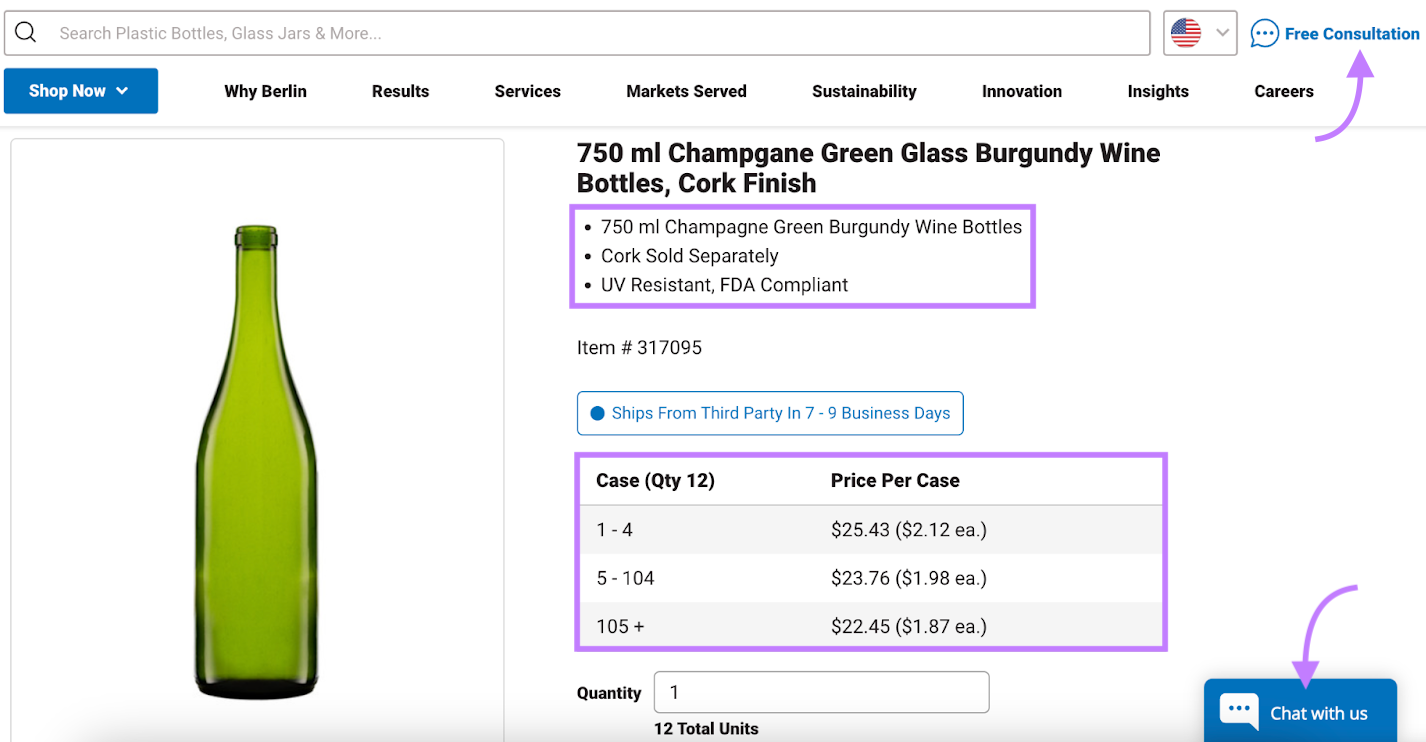
If a customer has questions, they don’t have to look hard for help—a “Chat with us” button is prominently placed in the corner of the screen. They also have the option to book a free consultation.
Visitors should also be able to easily find your call-to-action (CTA) button. You can have more than one, as long as they’re easy to distinguish.
In the example below, Folding Chairs and Tables features two CTAs: one for “Add to Cart” and another to apply for financing.
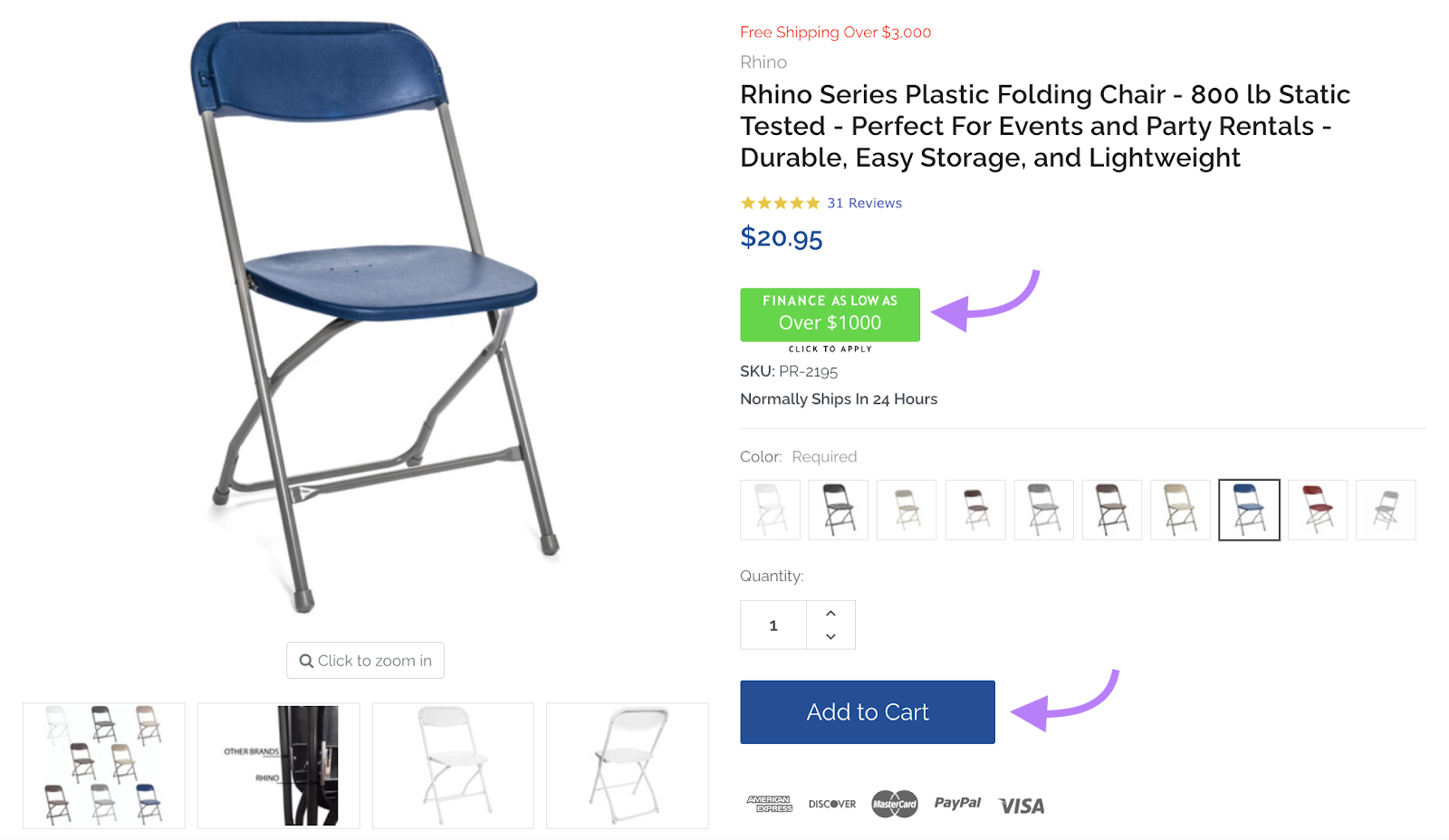
Based on size and placement, it’s easy to tell that the “Add to Cart” CTA is the main one. And this reduces friction for the customer because they immediately know where to click.
Featuring customer reviews on your product page will also increase conversions. That’s because 7 out of 10 consumers say that product reviews have a “very high” or “high influence” on their purchasing decisions.
Once a customer decides to purchase a product, a smooth checkout process is necessary. This will decrease the risk of an abandoned cart.
You can follow these tips for a better checkout experience:
- Allow customers to check out as guests without requiring them to register
- Offer multiple payment options
- Include a reorder option where applicable
- Autofill shipping information and other details for repeat customers
- Avoid adding unexpected fees at checkout
A/B testing can help you determine which design choices are more effective at driving conversions.
For example, ecommerce company Zalora used A/B testing to optimize its product page. By testing different ways of promoting their free return policy, Zalora discovered which version performed best with their customers. This allowed the company to increase its checkout rate by 12.3%.
7. Paid Marketing
Paid marketing via LinkedIn, Google, Facebook, and other digital channels is an efficient way of reaching new business prospects.
You can use paid marketing to draw attention to your product, live or virtual events, or even to distribute content. (As many as 81% of marketers use paid methods to promote their content.)
If increasing sales is your goal, you can leverage search engine advertising using tools like Google text ads.
Google text ads are pay-per-click (PPC) ads that allow your website to appear at the top of the search results for a given keyword.
Here’s how Google text ads appear when you search for “office furniture”:
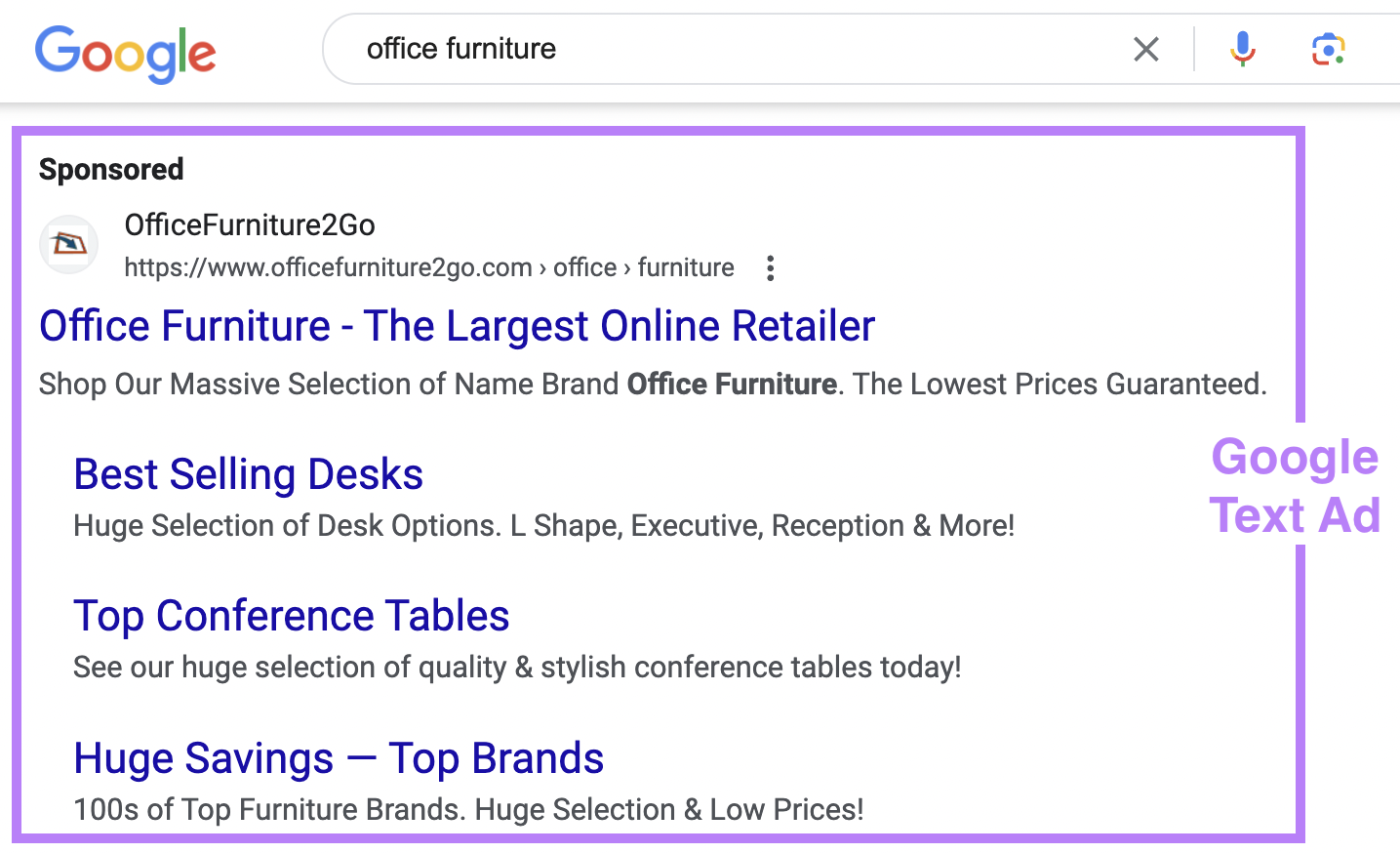
The ads are visually similar to organic search results. This helps reduce banner blindness—the tendency to avoid looking at website elements that look like ads.
If your goal is to promote content (like gated reports or ebooks), LinkedIn ads can be highly effective. According to 79% of content marketers, LinkedIn produces the best results for paid content promotion.
Marketing on LinkedIn allows you to target people based on their industry, title, company, and other interests. And this gives you the ability to reach the right people.
Consulting company Mplus used LinkedIn ads to draw attention to a video interview:
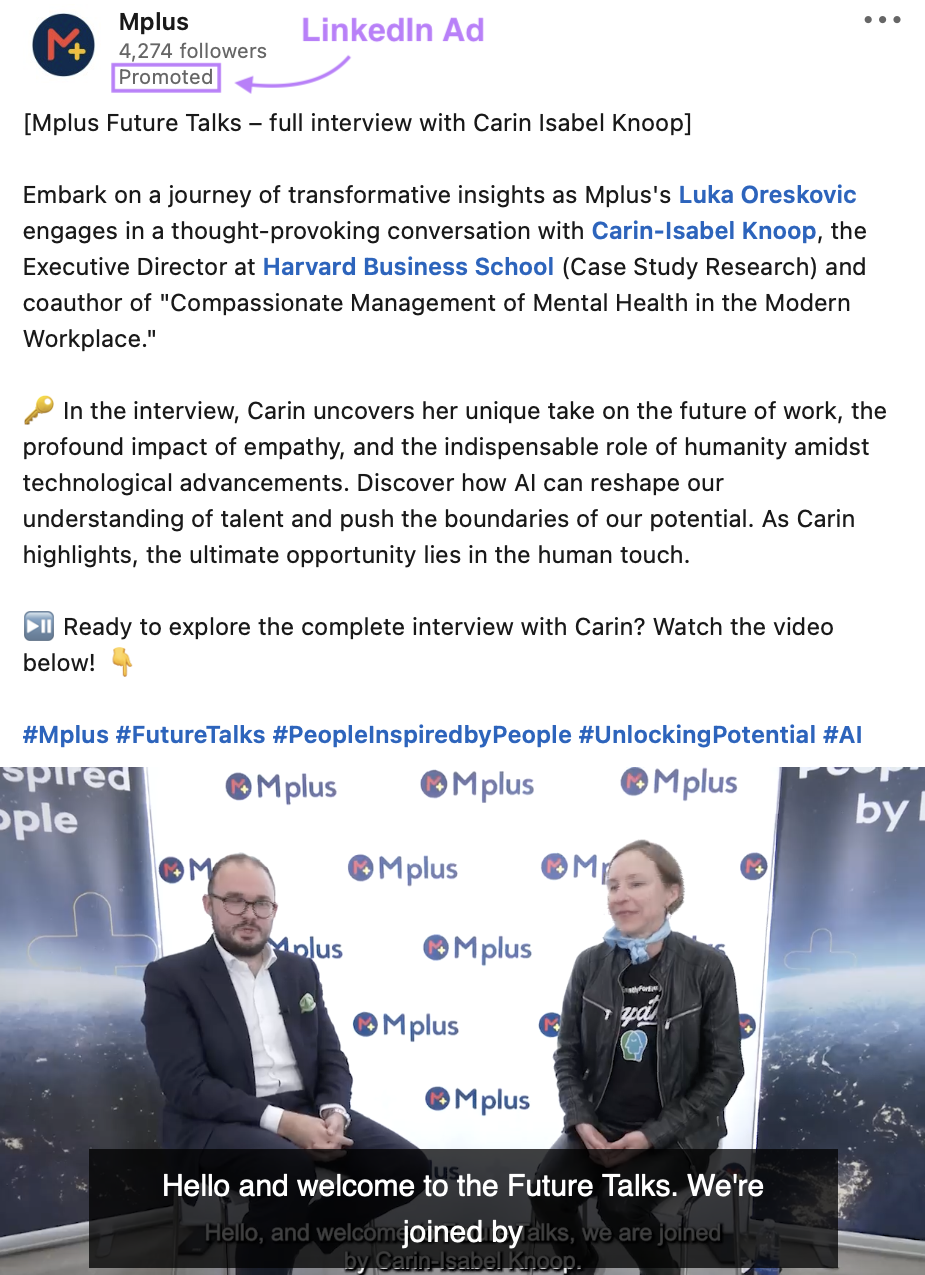
With the exception of a small “Promoted” label, this ad looks just like an organic LinkedIn post. And this improves engagement.
8. Influencer Marketing
Influencers lend credibility to your brand and introduce you to a new audience.
But because multiple stakeholders are involved in the B2B buying process, finding the right influencers might not be as straightforward as it is in B2C.
First, you need to understand who your buyers are. Are they VPs of talent? Directors of innovation? Once you have created your buyer personas, research the thought leaders they’re engaging with on social media.
This will lead you to industry experts you can connect with to promote your B2B ecommerce brand.
Georgetown law professor and author Chris Brummer is an example of a thought leader in the financial industry. His podcast, Fintech Beat, hosts finance experts as well as people leading exciting companies in the industry.
If you were a B2B finance company, being a guest on the Fintech Beat would put you on the radar of many potential customers.
Live events with industry experts are another example of B2B influencer marketing. A webinar with one or more influencers as guests would draw attention to your brand.
Want to simplify your influence marketing efforts? Try Semrush’s Influencer Analytics.
Find the perfect influencers for your B2B brand in a database of more than 27 million influencers. Monitor your campaign’s performance. And grow your B2B ecommerce business.
Try it today:
Marketing a B2B ecommerce business can be hard. But you can make it easier with the right digital marketing toolkit.
Get everything you need to grow your business with Semrush. Sign up for free today.
Source link : Semrush.com
